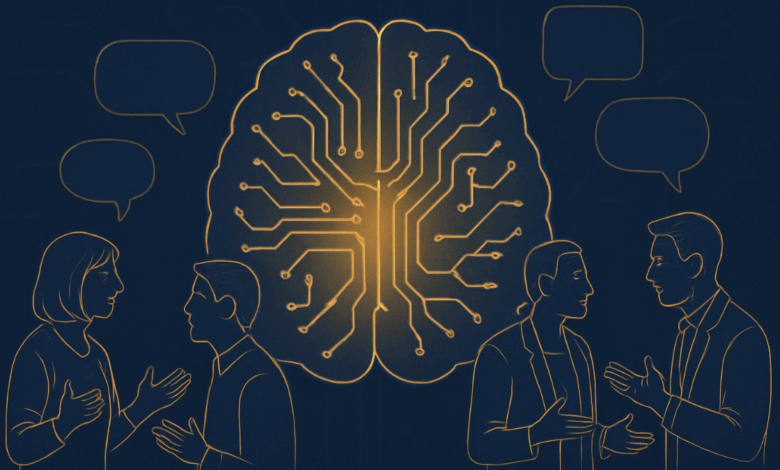
The promise of workflow automation has long captivated enterprises. From simple macros in spreadsheets to full-blown robotic process automation (RPA), businesses have spent decades trying to streamline repetitive tasks and scale efficiency. But today, something deeper is happening: autonomous AI agents are not just automating – they are learning, reasoning, and acting with a degree of independence that pushes beyond the bounds of traditional systems.
This shift represents more than a technological upgrade. It signals a paradigm shift in how organizations operate, make decisions, and allocate human talent. For business leaders in the US and UK – where innovation meets complexity – understanding this evolution is now mission-critical.
What Are AI Agents, Really?
At a basic level, an AI agent is a software entity that can perceive its environment, take action, and learn from the results. But in enterprise contexts, this definition expands to include systems that continuously operate across functions, adapt to new data, and interact with both humans and other systems.
Consider a layered model of agents:
- Intel Agents scan internal and external data sources to surface relevant insights (e.g., competitor pricing, regulatory updates, customer sentiment).
- Data Agents transform messy inputs like PDFs or Slack messages into structured, usable formats.
- Ops Agents trigger workflows – updating dashboards, drafting reports, initiating purchases.
- Judge Agents evaluate outcomes, prioritize actions, and create feedback loops to improve future behavior.
This orchestration begins to resemble something more akin to a digital operations brain than a set of static automations.
From Pain Points to Proof: Why AI Agents Are the Next Operational Layer
Modern enterprises are grappling with a familiar but worsening trifecta: fragmented data, sluggish decision cycles, and tool overload. Traditional systems were designed for structured inputs and siloed workflows – today’s reality is anything but. Data lives in PDFs, Slack threads, Notion pages, cloud apps, and spreadsheets. Teams are distributed and overwhelmed. Strategic decisions must be made with incomplete information, under tight timelines.
This is where AI agents come in – not as another tool, but as an operating layer that turns unstructured chaos into structured context and action. Their value lies in cross-functional coordination and the ability to adapt to real-world complexity.
Here’s how that plays out across sectors:
- Marketing & Ops: A US ecommerce brand automated weekly dashboards using agents that pulled metrics from disconnected tools, flagged anomalies, and suggested tactical adjustments. This freed up 40+ hours per month and enabled faster reaction to market shifts.
- Media & Content: A PR agency used agents to process and tag vast archives of articles, transcripts, and research. The result was a living knowledge base that supercharged editorial output and reduced duplication.
- Consulting & Strategy: A boutique consultancy deployed intel agents to scan public filings, industry news, and macroeconomic data. Tailored digests landed in inboxes weekly, giving consultants sharper insights without time-consuming research.
- Legal & Compliance: A global nonprofit foundation used agents to monitor regulatory changes and map them to internal policies – cutting weeks of manual cross-referencing down to hours.
Across these use cases, the impact is consistent: better decisions, faster execution, and more time spent on strategic work rather than administrative triage.
Risks, Limits, and Ethical Considerations
Autonomous systems are not without risk. As agents gain autonomy, so too must organizations establish robust governance. Key areas to watch include:
- Decision Accountability: Who is responsible if an agent recommends a bad decision?
- Bias and Transparency: If agents are trained on historical data, they may perpetuate blind spots or biases.
- Security: Agents often require access to sensitive systems and documents. Guardrails, audit logs, and role-based access are essential.
- Human Over-Reliance: A growing danger is “decision laundering,” where humans defer too quickly to agent outputs without critical review.
The answer is not to avoid autonomy, but to architect it carefully. High-performing companies embed humans in the loop, using agents to augment judgment – not replace it.
Where It’s All Headed: AI as Infrastructure
We are moving into a future where AI is not a tool but a layer – infrastructure underpinning how businesses sense, think, and act. Autonomous agents are part of a broader movement toward semantic workflows, compounding feedback loops, and adaptive decision systems.
For smaller teams, this shift represents enormous leverage. Instead of hiring a fleet of analysts, they deploy a fleet of agents. Instead of relying on brittle integrations, they architect around intelligent orchestration.
Research from McKinsey suggests that generative AI could add up to $4.4 trillion annually to the global economy, with a significant portion coming from operational efficiency and decision acceleration. Agents will likely be the mechanism through which that value is realized.
Conclusion: Build Intelligence, Not Just Automation
The future of enterprise operations is not more dashboards. It’s dynamic, self-improving systems that see patterns, surface insight, and act. AI agents offer a pathway to that future – but only if deployed with intention.
For leaders, the challenge is to reimagine workflows not as static chains of tasks but as living systems. The reward? More adaptive organizations, more empowered teams, and more time spent on what truly matters.




